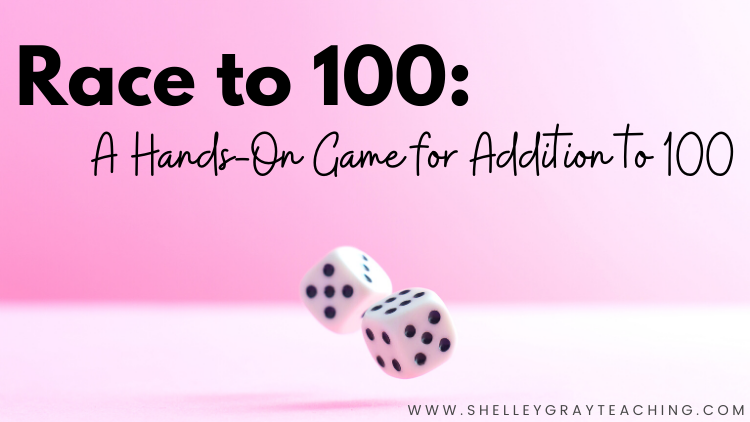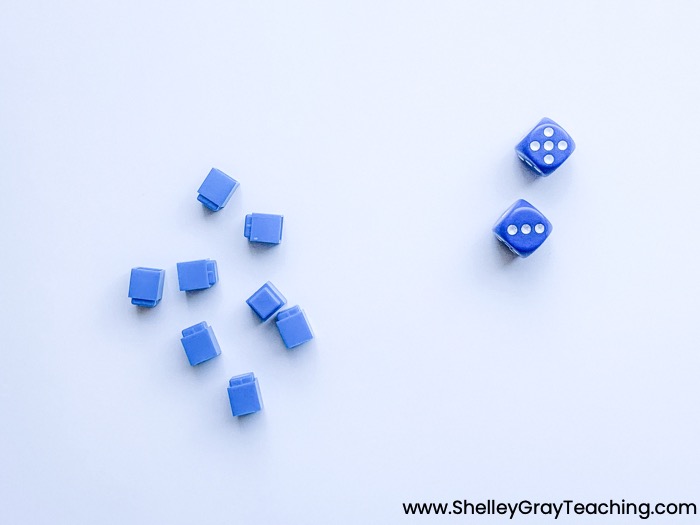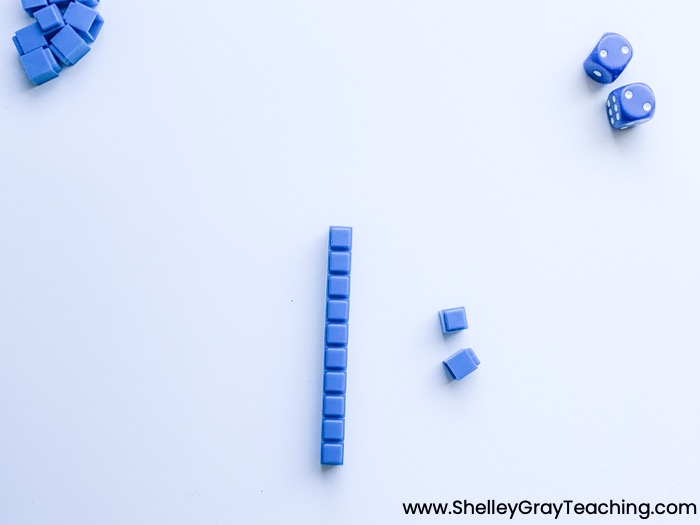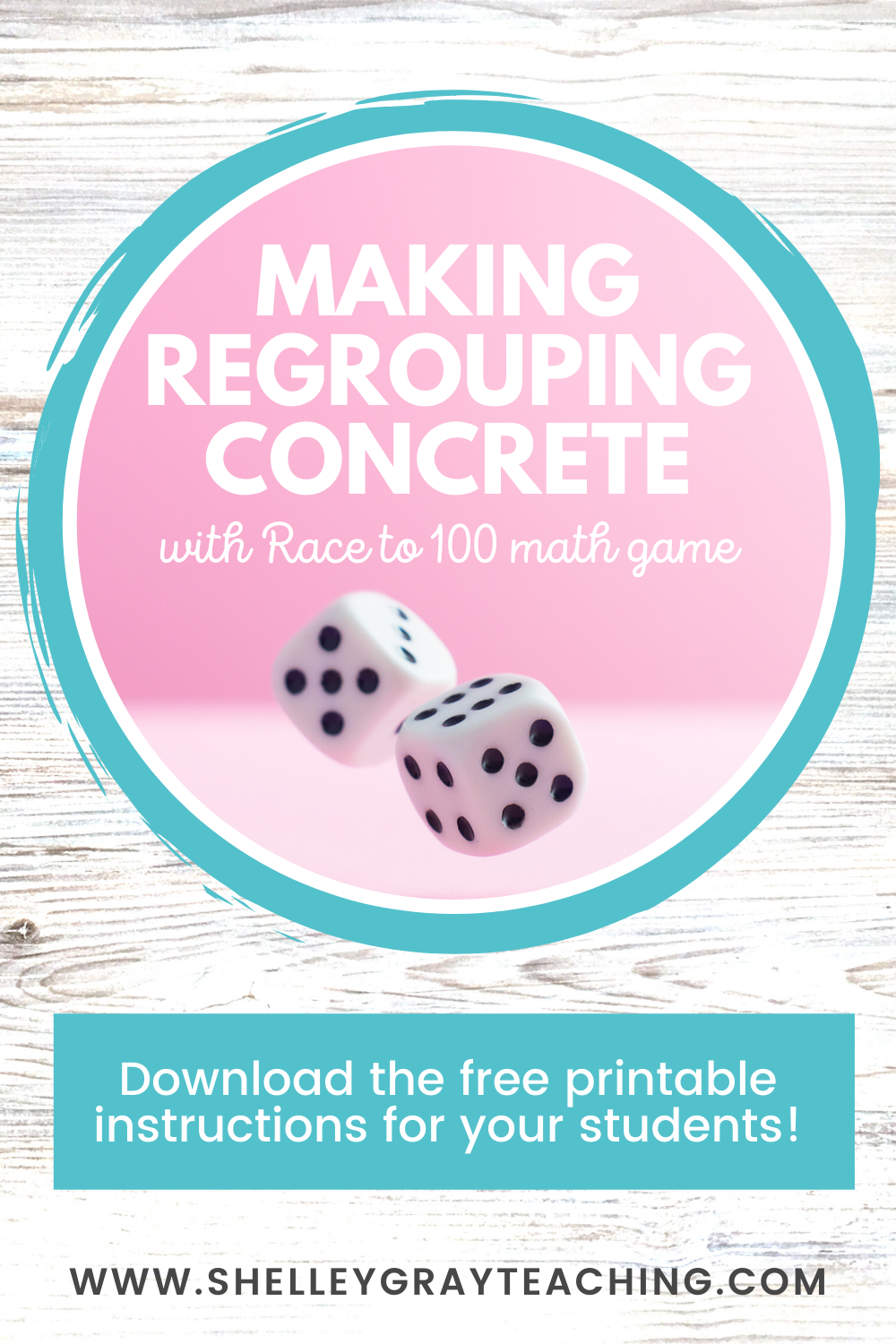
Race to 100 (also known as The Trading Game) is a fun, two-player game for reinforcing addition and subtraction within 100. Even upper-grade students will benefit from this game, particularly those who struggle with number sense. The concrete nature of this game helps students make important connections and enables them to SEE what regrouping really means.
HOW TO PLAY
To play Race to 100, each pair of students will need some base ten blocks and two dice (or one 12-sided die).
Player one begins by rolling the dice and taking that number of base 10 blocks.
Player two then takes a turn.
Now player one rolls again and takes that number of blocks. If she has at least 10 ones blocks, she will trade them for a ten.
Play continues. Players keep trading ten ones for a ten block until one person has ten tens and can trade those for a hundred block.
BENEFITS
I love Race to 100 for several reasons.
- It gives students the opportunity to work with concrete materials. We know the importance of concrete opportunities in math. Students naturally learn about regrouping when they trade tens ones for a ten. This allows them to construct their own understanding of regrouping.
- Students use the relationship between addition and subtraction to figure out how many more they need to win. For example, “I have 85! I only need 15 more to get to 100!” Being able to see the base tens helps them make these important connections.
- It’s fun! Kids (even older ones) love this game!
POSSIBLE ADAPTATIONS
- Play Race to 200 or 300 instead.
- Play using subtraction! Start with 100, subtract each dice roll, and try to be the first to get to 0.
- Flip cards instead of rolling dice.
If you’d like to try this game in your classroom, you can download and print the game instructions HERE.









2 Comments
I have used this game with younger students and found that groups of 3 can play with the third player being the banker. The banker accepts the counters for trading and does the exchange.
Awesome idea.